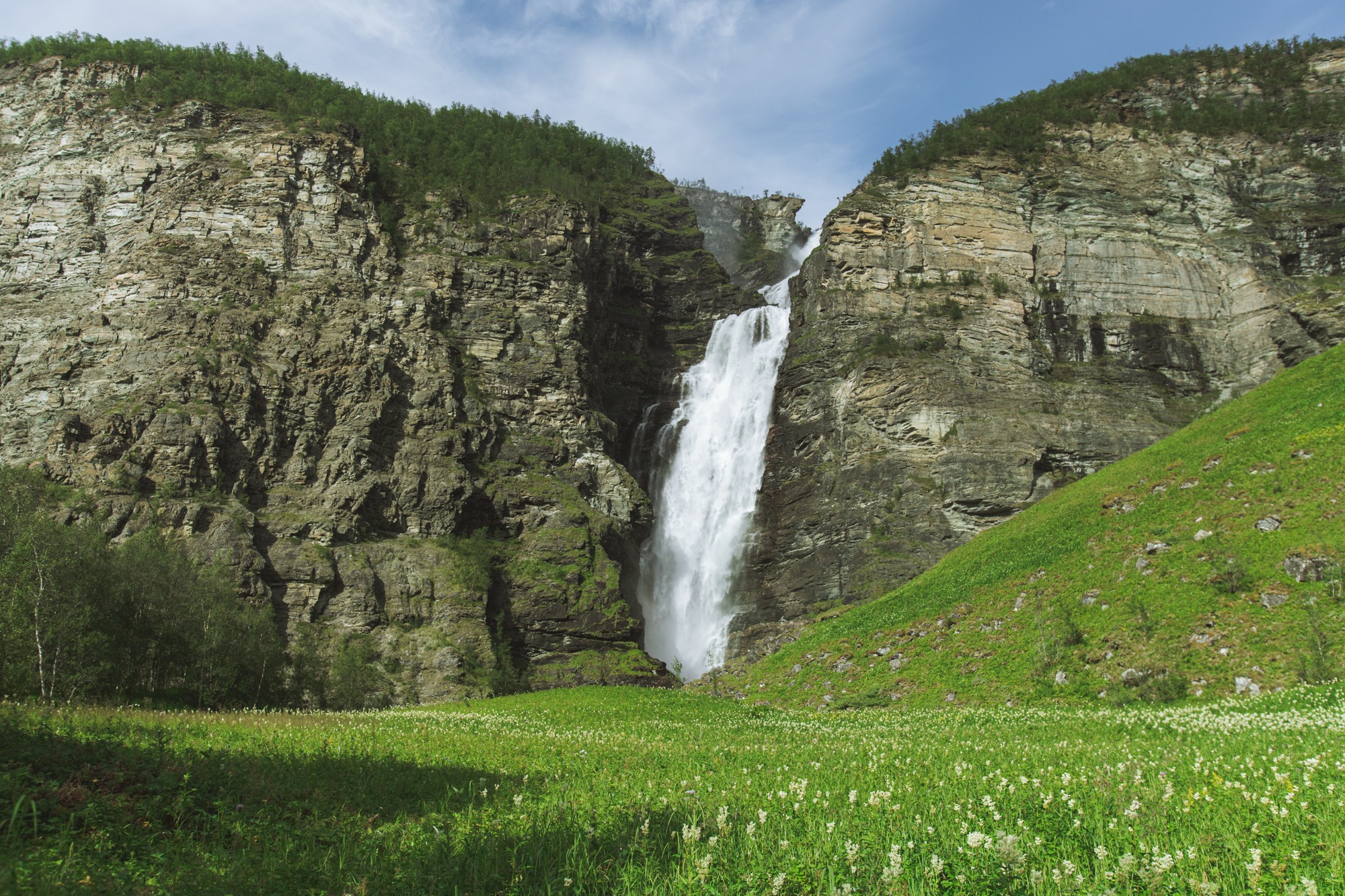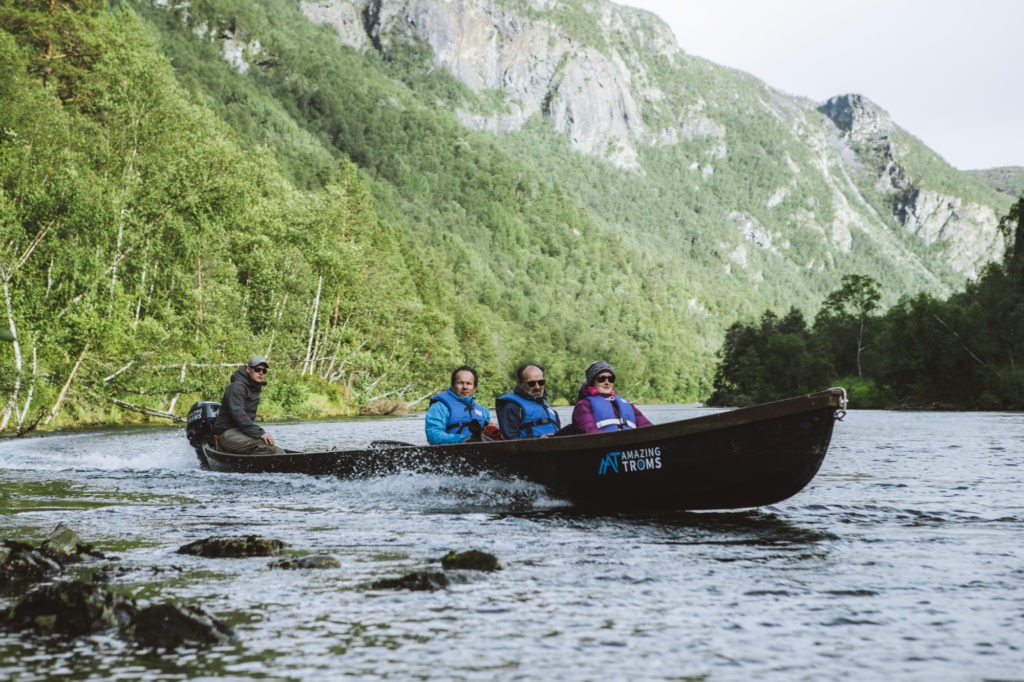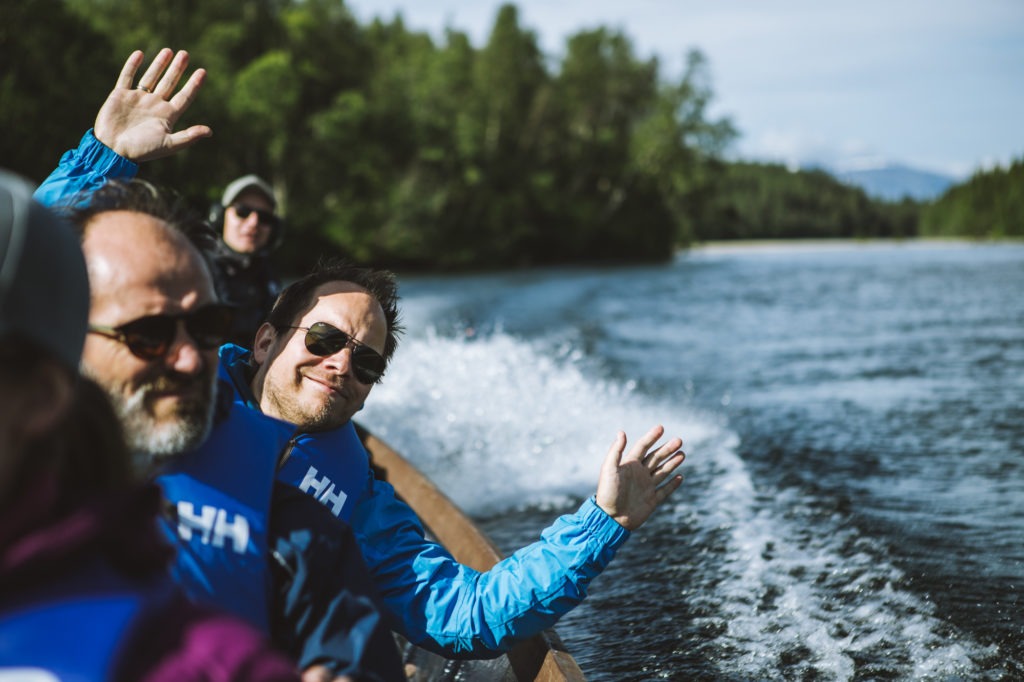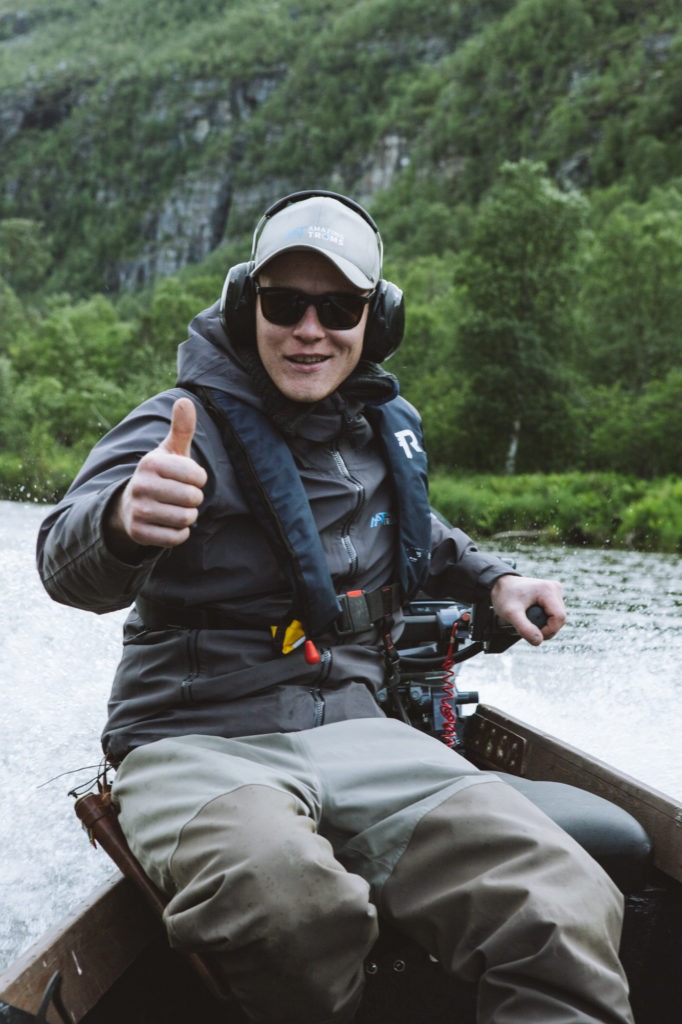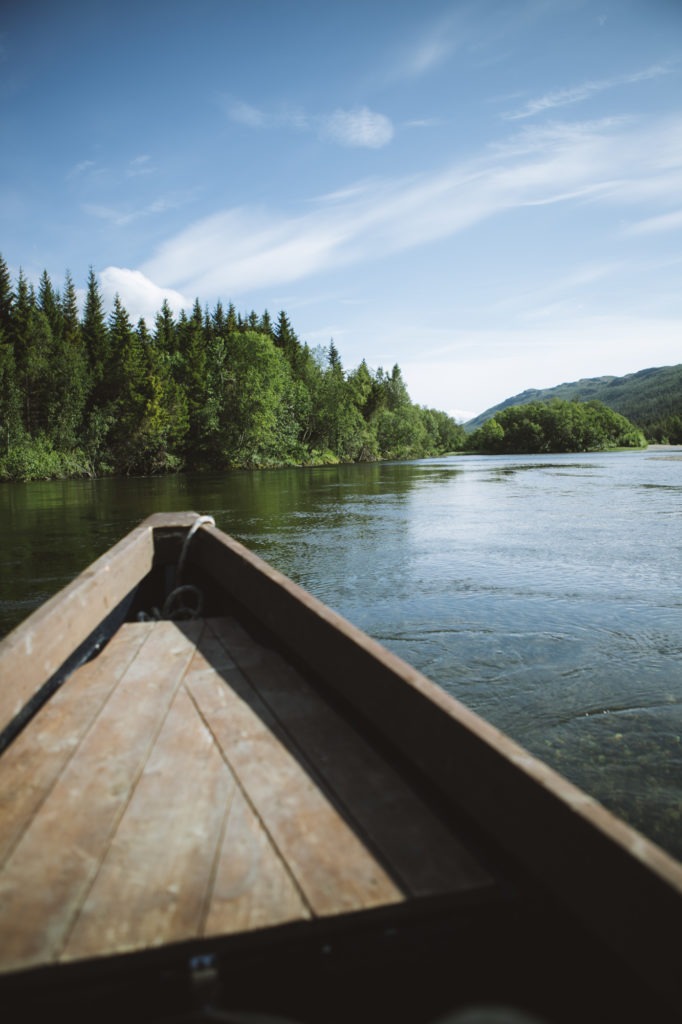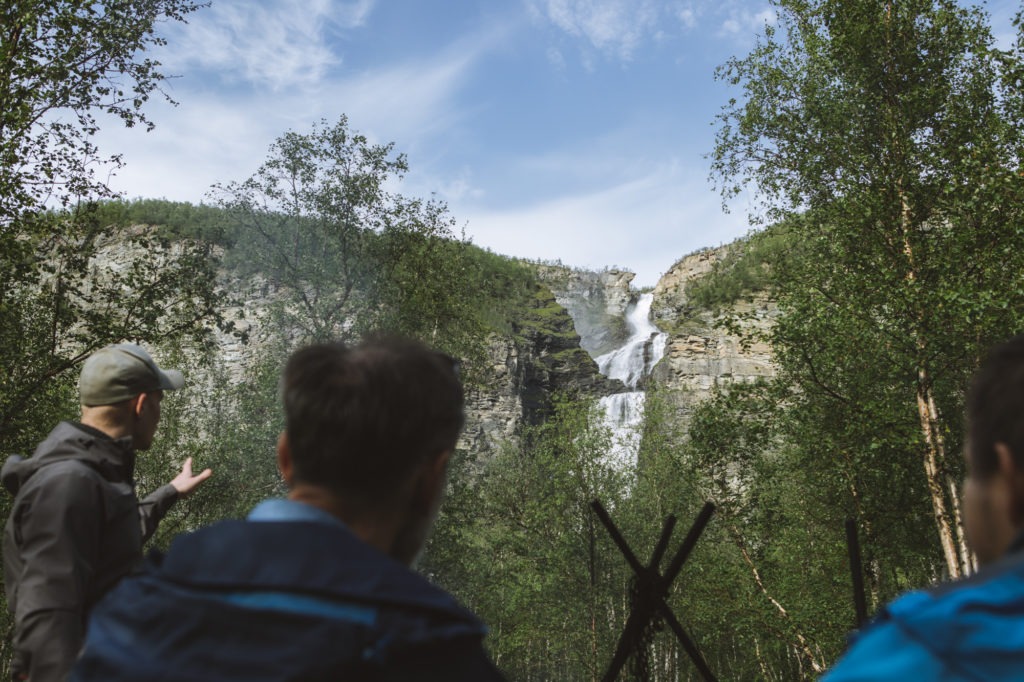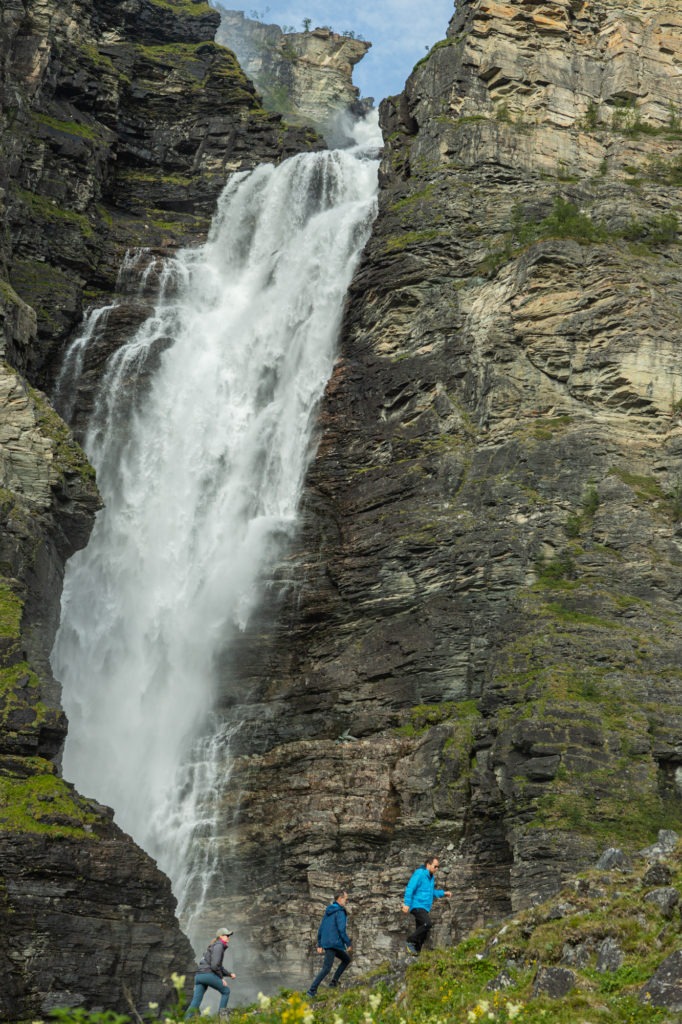The water splashes when we embark. While we slowly push ourselves off the riverbank, a few salmon swim past us up the river. We are on Reisaelva, a river in Northern Norway, far north of the Arctic Circle. Steffen Bakkland, the captain and local guide navigates the river with ease. Even though he’s only 29 years old he knows these rivers better than many. It takes years of experience to understand this river’s flow and floor. Luckily he has five years of experience and hundreds of trips behind him, so manoeuvring his 30-feet-long boat is no problem. On our way up the river we pass waterfalls, see small wooden cabins, and wave to fishermen, and Steffen knows where the waterfalls originate, who owns the cabins and who the fishermen in the river are.
Along the river, there are hiking trails on both sides, but they are far into the woods and can not be seen from the water. Throughout time, the river and its surrounding forests have been used for hunting, trading, transportation of goods, and lately, tourism. The river’s headwaters are located close to the Finnish borders. Therefore the river has played a key role in trade between the locals and Finns. Today, there is no trade in the valley, but there are still Finns crossing the border to fish in the river and visit the breathtaking waterfall. Steffen runs a company offering riverboat tours along the river to Mollisfossen, and all the way to Imofossen, another waterfall 15 kilometres up Reisaelva.
After an hour on the river, we finally see it. We take a last turn before we arrive at the wooden dock by the riverbank. With the boat safely tied up we disembark, pass a small campsite and approach the waterfall. With its 269-metre three-tired-fall, Mollisfossen is not just a spectacular sight in itself, but also the tallest waterfall in the Arctic. Every second, its mouth spits out over 6000 litres of water, enough to fill an Olympic swimming pool in under five minutes. There is no doubt why this magnificent waterfall is such a destination for many travellers.
“You feel pretty small when you stand next to one of Europe’s mightiest waterfalls. Approaching the waterfall, you hear the water roaring as it hits the ground, and feel the vapour hitting your face. The experience is wet, wild and wonderful.”
Peter Vang, traveler
It is the perfect checkpoint before apporaching the majsetic waterfall.
Interested in the Scandinavian outdoors? Then we suggest reading our story about Nordmarka, Exploring the Oslo wilderness.
We at Nuet publish weekly posts about Norwegian outdoors, culture, cuisine and more. Follow our Instagram @nuetaquavit for instant updates on our posts.
